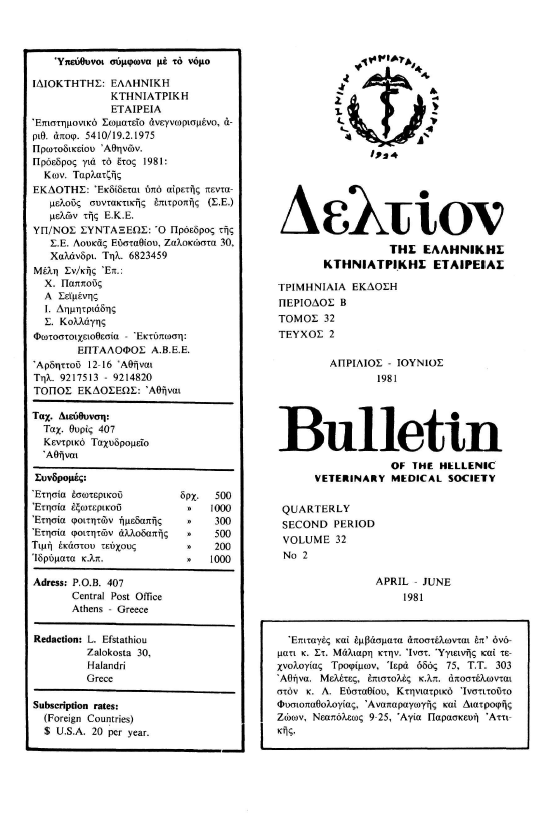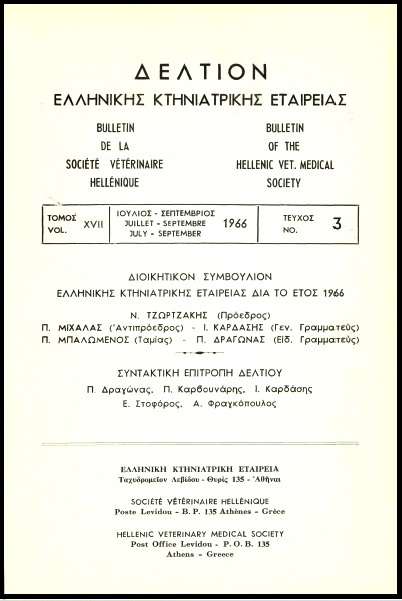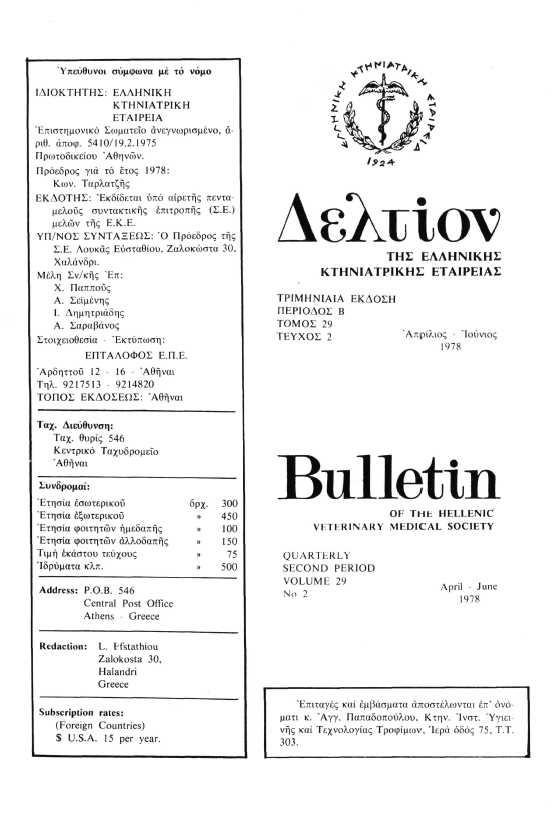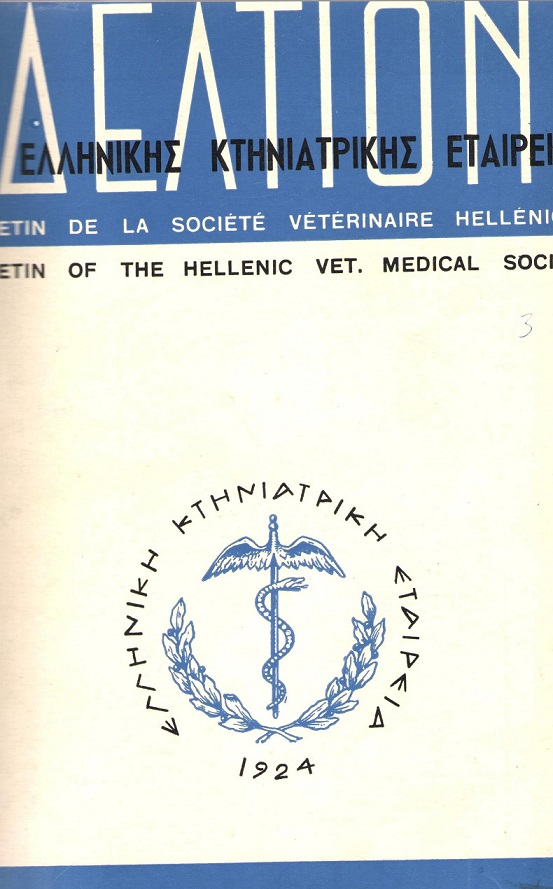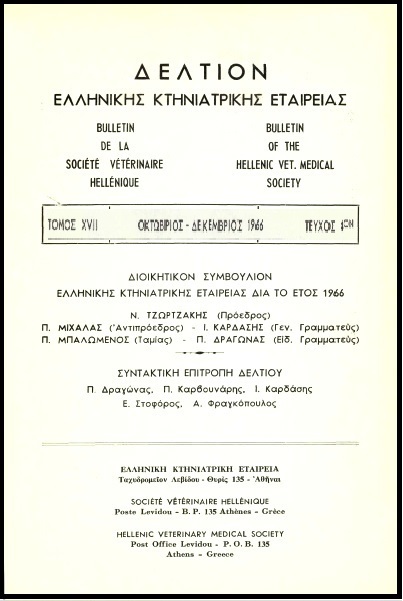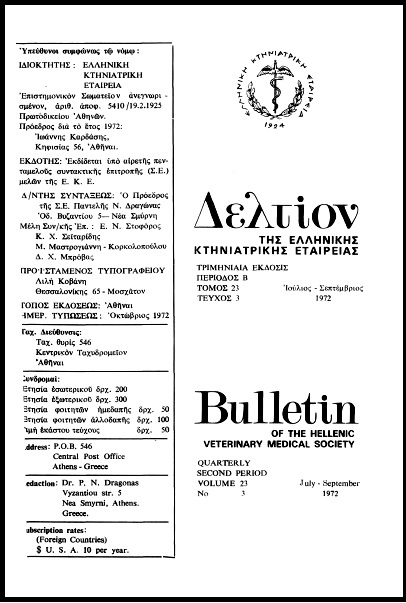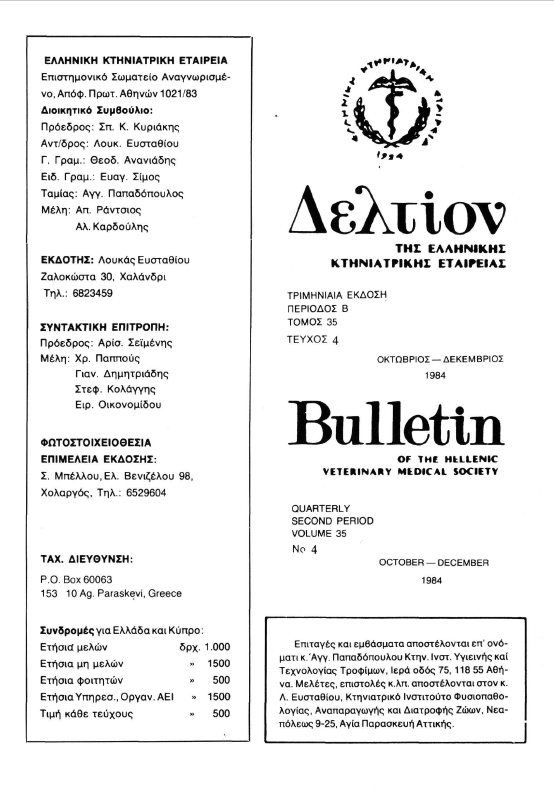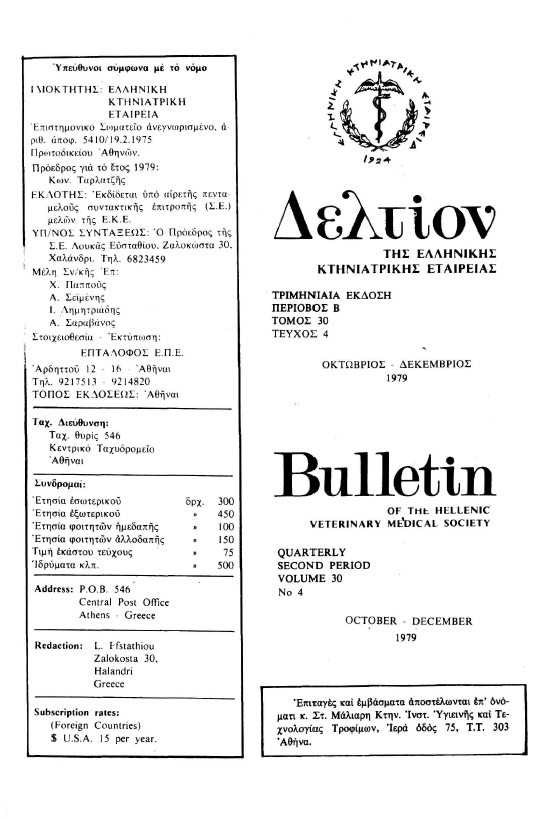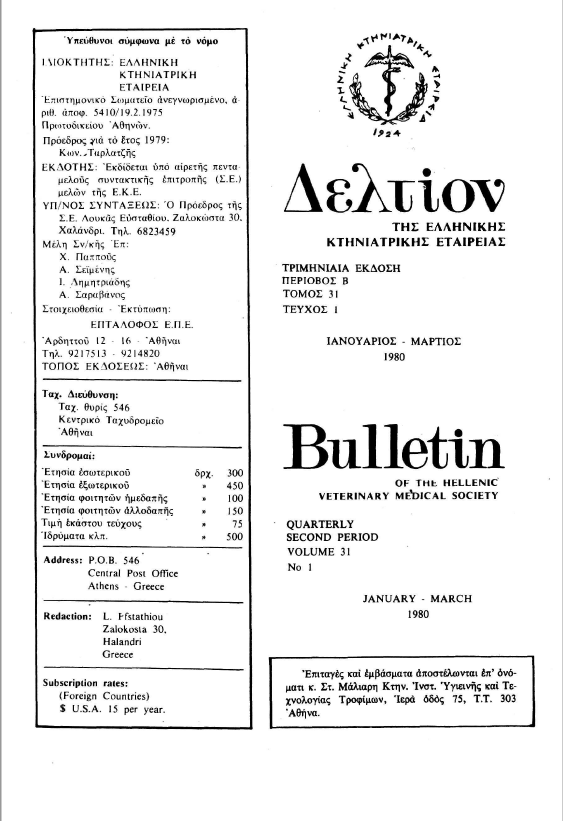Freguency of salmonella infection of feedstuffs of plant and animal origine
Abstract
The salmonella infection frequency of plant and animal origin feedstuff's was investigated. The samples were sent from regional Veterinary Services, feedstuff's factories, breeding units ete and were suspicious to cause pathological conditions to animals. Several usual and unusual salmonella serotypes were isolated. Except of the well known infection of animal origin feedstuff's, a high percentage of salmounella infection frequency was observed in plant origin feedstuff's treated by extraction. The underneath infection percentages were found: Simple animal origin feedstruffs: 10,6% Simple plant origin feedstuff's: 12,7% Complex feedstuff's: 5,6% The importance of the results is being considered, the infection causes are being investigated and measures are suggested to prevent the spread of these pathogenic microbes with the feedstuff's commerce cycling.
Article Details
- How to Cite
-
ΠΙΤΣΙΝΙΔΗΣ Γ., & ΕΥΣΤΑΘΙΟΥ Λ. (2019). Freguency of salmonella infection of feedstuffs of plant and animal origine. Journal of the Hellenic Veterinary Medical Society, 32(2), 153–158. https://doi.org/10.12681/jhvms.21489
- Issue
- Vol. 32 No. 2 (1981)
- Section
- Articles

This work is licensed under a Creative Commons Attribution-NonCommercial 4.0 International License.
Authors who publish with this journal agree to the following terms:
· Authors retain copyright and grant the journal right of first publication with the work simultaneously licensed under a Creative Commons Attribution Non-Commercial License that allows others to share the work with an acknowledgement of the work's authorship and initial publication in this journal.
· Authors are able to enter into separate, additional contractual arrangements for the non-exclusive distribution of the journal's published version of the work (e.g. post it to an institutional repository or publish it in a book), with an acknowledgement of its initial publication in this journal.
· Authors are permitted and encouraged to post their work online (preferably in institutional repositories or on their website) prior to and during the submission process, as it can lead to productive exchanges, as well as earlier and greater citation of published work.

